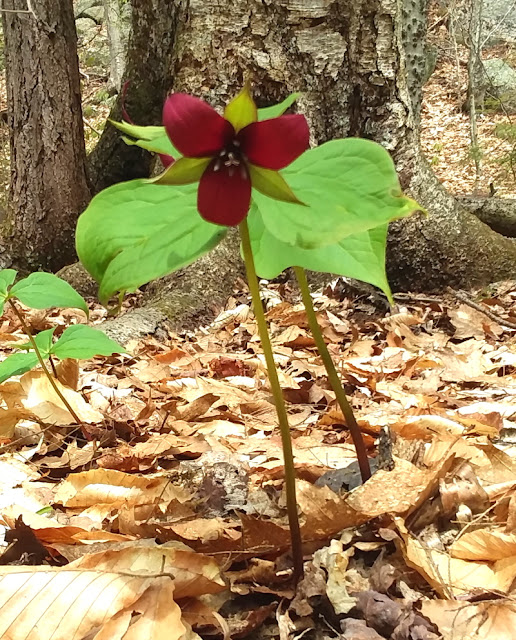 |
| Mr. Bear leaves quite a wake. |
It was crossing from the north side of the lake near the outlet, making landfall on the Marion Conservation land near the powerlines. When it was on dry land it certainly wasn't being discreet as it crashed along through the underbrush.
 |
| He looks a little thinner soaking wet. |
Just another typical day on Lake Wicwas.
But that's not all. Driving over a rise in the road two days later I found this.
 |
| There he is again. |
I stopped and he just kept ambling down the road towards me until he decided he really better not get any closer.
And just like that, he was gone.
Our loons haven't nested yet as far as I can tell - the two of them are still out swimming and fishing together except when there are altercations with a third, rogue loon. At one point two loons were having a loud, flapping battle right next to me on the shoreline. It was the sound that caught my attention - I thought there was a bear or a moose climbing up on shore, but couldn't see anything. Then I saw the two loons thrashing at each other and suddenly diving and disappearing. Tom and Pat B. caught another example of the situation when three loons popped up near their boat, apparently oblivious to the boat as they noted the loons "barely noticed us as they were so involved in themselves." They took this video:
As long as there is a loon harassing the pair they may not nest, and the time is here for them to do so.
There have been a few other birds I don't see very often around the lake, all seen while on various paddles. On one warm, moderately windy day I saw two birds soaring over the lake enjoying the thermals. One is a common sight:
 |
| Turkey vultures are often seen soaring over fields and roadways. |
The other I have only seen a couple of times, hunting in winter at the bird feeders:
 |
| Cooper's hawks are not rare, but rather secretive. |
I'll remind you that I'm not expert in these matters and it's possible this is a sharp-shinned hawk as the two are very similar, so I'd be happy to hear any thoughts on the identification. The shape of the tail and the size of the head pointed me to the Cooper's hawk. Both the Cooper's and the sharp-shinned dine primarily on smaller birds, keeping out of sight until attacking at high speed. Being smaller than broad-winged and red-tailed hawks gives them the ability to catch their prey in flight with their great speed and agility even in dense forests where a fleeing bird will attempt to evade them.
One last bird, considered more an ocean bird than a lake bird is the spotted sandpiper which was flitting along the shoreline, stopping here and there in search of something to eat - insects on the rocks or larvae in the water.
 |
| Spotted Sandpiper |
 |
| A pink lady's slipper just before blooming. |
And many in their full glory.
 |
| Everyone's favorite! |
Note: If you're interested in a local walk this weekend to look for wildflowers here are some suggestions:
- The Beaver Pond Trail at Page Pond (Trail head on Blueberry Hill Rd)
- The Quarry Loop Trail at Page Pond
- The White Trail at Waukewan Highlands
- The Yellow Trail at Hamlin-Eames-Smyth













































